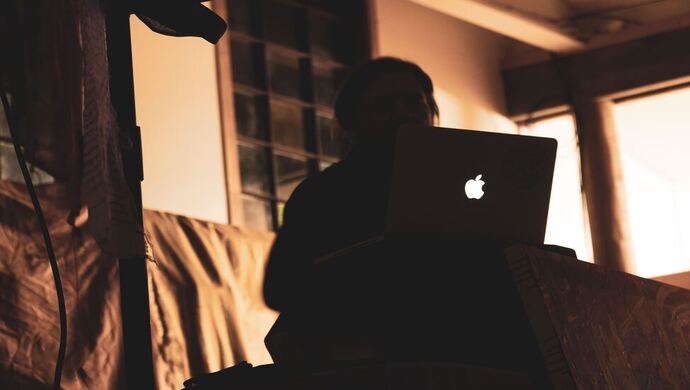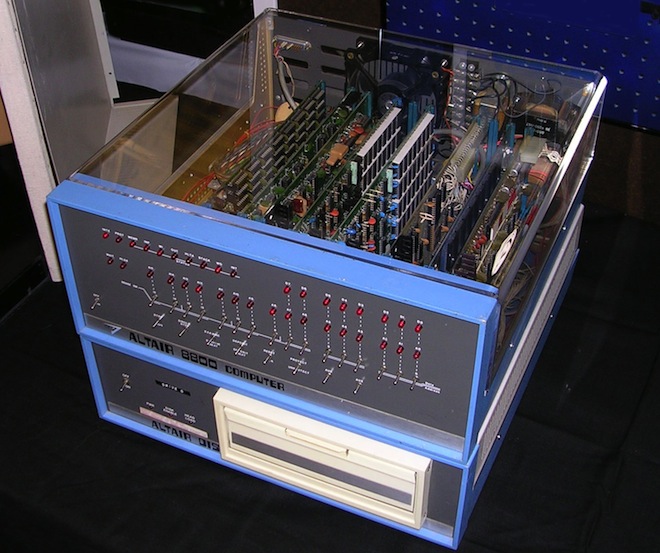
“The key to changing customer behaviour could very much lie in observing your targeted users’ way of dealing with less-than-perfect solutions, in order to create something more simpler,” said Philipp Kristian Diekhöner in a webinar session with e27 last week.
During the session, Diekhöner explained about how startup founders can change customer behaviour through their products, the innovation strategist brought fourth the example of Apple, the tech giant that has successfully achieved that with their products.
In 1975, Apple co-founder Steve Wozniak built the very first Apple computer based on this philosophy. Wozniak had seen MIT’s Altair at a computer hobby meetup which looked no more than like a box of circuits with blue lights popping out of it. Called The MITS, the kit came with a DIY approach for others to build something simpler.

Altair 8800 Computer with eight inch floppy disk system (c.1975). Image Credit: Michael Holley
Using that kit, Woz managed to put together the very first Apple computer, completed with a keyboard that has the ability to connect with a TV screen. To this day, this arrangement continues to become an archetype for all computers.
Despite their wild success, Apple was not the only one to have used this approach. For example, Circles.Life, Singapore’s leading telco provider, gained traction when they decided to scrape off the use of 24-month contracts. Instead, the company sells people the idea of “no contracts”. Before the no-contract idea existed, people used other telco service providers with no complaints, because there was no other option that existed during that time.
Also Read: Digital literacy for the masses: How Apple is investing in tech education across Singapore
This point brings us to the next mantra as taught by Diekhöner: “Pitch a problem that people didn’t know they have”. Take the example of Airbnb. For years, customers were used to the idea of booking hotels through various platforms. However, Airbnb managed to offer an alternative way of travelling: Staying in unique homes such as a local resident’s home to save up on accommodation cost –while travelling.
This comes with plenty of observation and spotting the way users deal with less-than-perfect solutions. Simply ask yourself, what would they rather want?
Creating a mental monopoly
The process of changing behaviour begins when products influence the state of mind that people are in. Mental monopoly is a term used by Diekhöner can also be restated as “the perceived best option”.
Movies do this in different forms; companies also manage to do it with subtlety. For example, if you are having a bad day at work, your mood can immediately be shifted if you open 9gag and scroll down to a cute dog video.
Another crucial factor of behavioural change is utility. An internal calculation of how much utility someone can receive from acting upon a decision or changing behaviour can be crucial when it comes to decision making.
To shift automated behaviours, there has to be some amount of utility or mood shift involved. In the case of Apple, it was a combination of utility with simplicity that gave rise to one of the biggest success stories in tech.
Also Read: SoftBank announces new US$108B Vision Fund with Microsoft and Apple as investors
Focus on building a mental monopoly in the minds of users can become a key in behaviour change.
To know more about changing customer behaviour tune into our YouTube channel for a video of the webinar and share your thoughts.
–
Win three signed copies of The Trust Economy by Philipp Kristian Diekhöner and Echelon Asia Summit passes! To enter, submit a guest post answering the question “How do you build products that change customer behaviour?” and sign up for the e27 newsletter. This giveaway is valid for Singapore-based entries only.
Image Credit: Ibrahim Rifath on Unsplash
The post Apple successfully changed customer behaviour. Here’s what entrepreneurs can learn from it appeared first on e27.